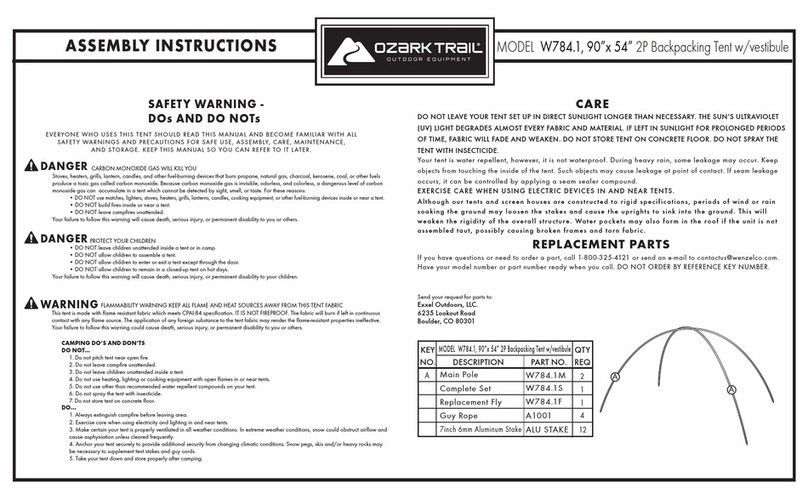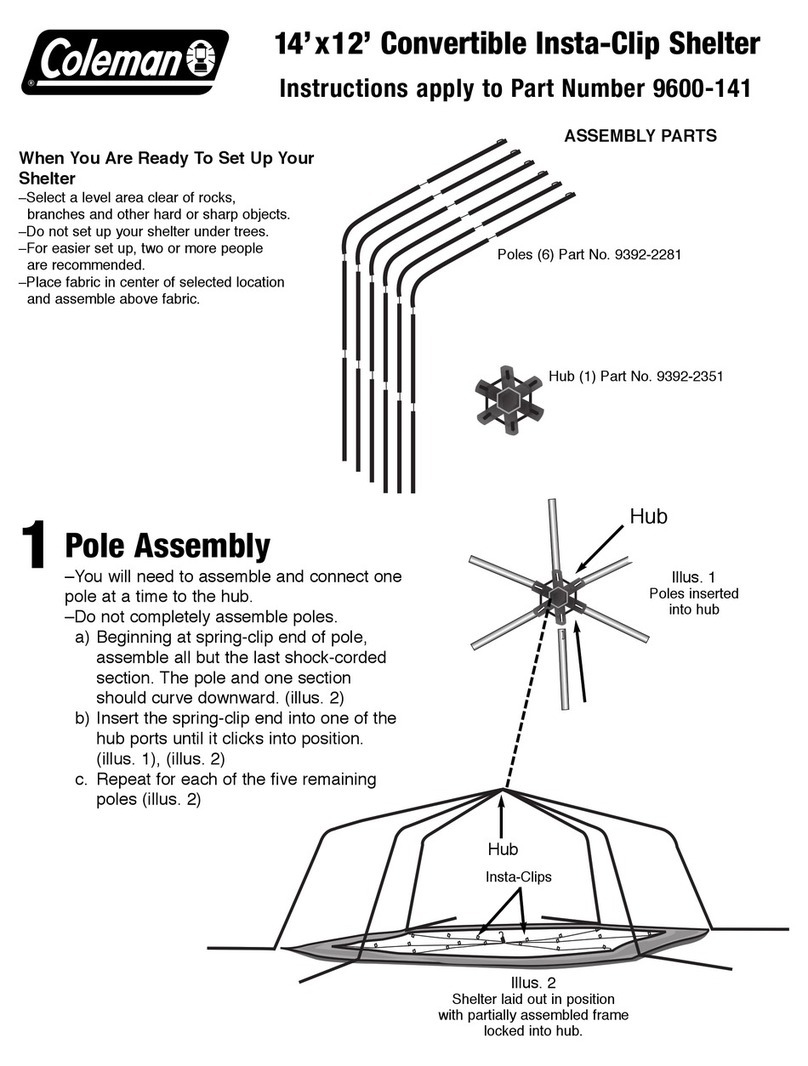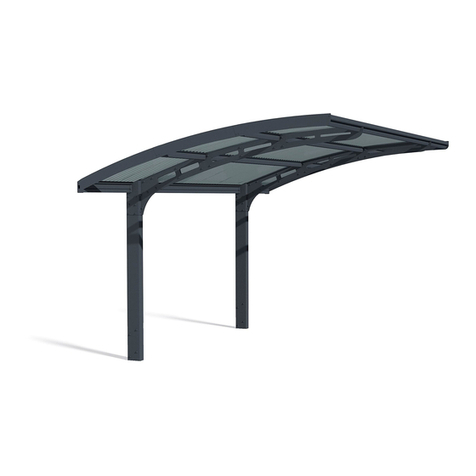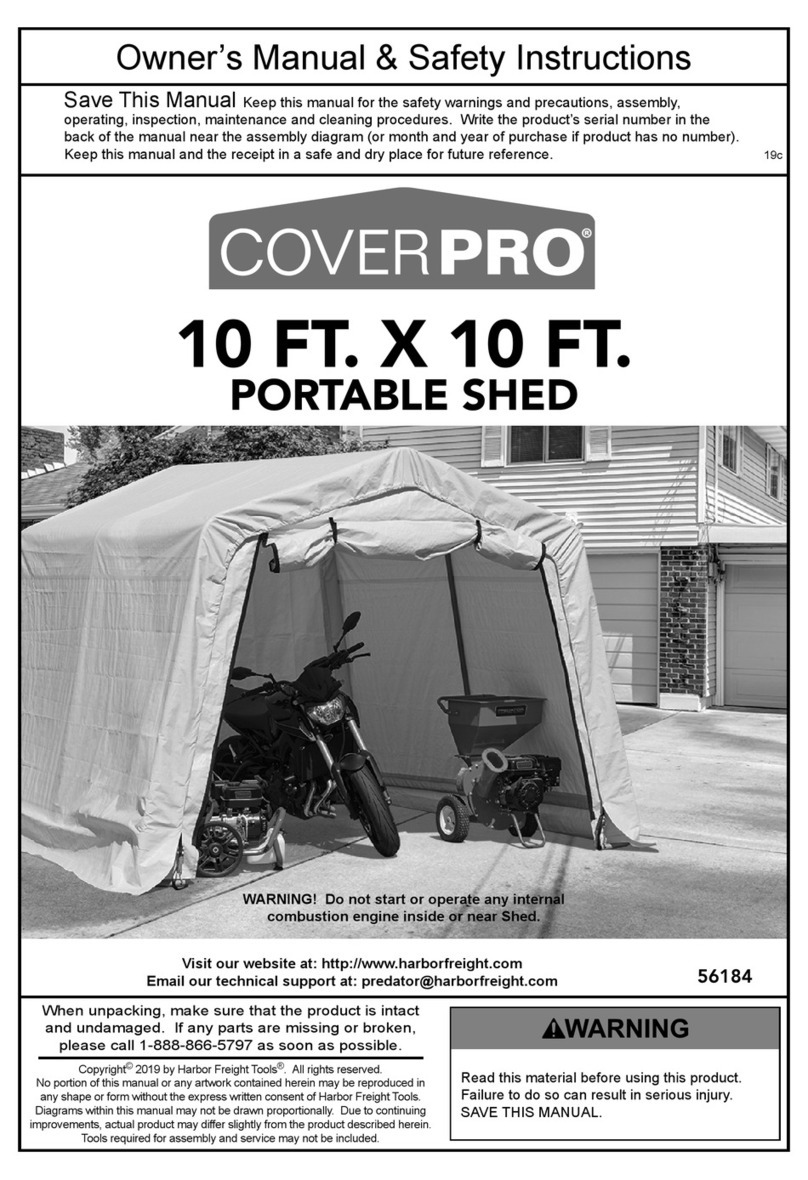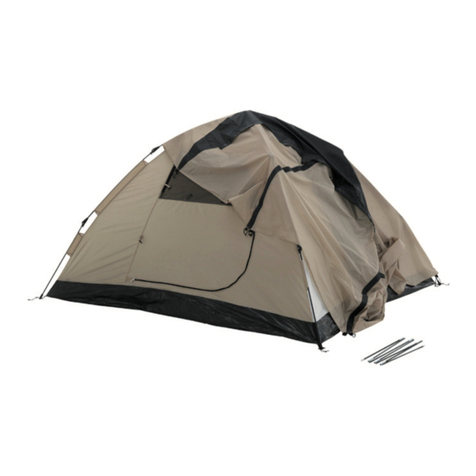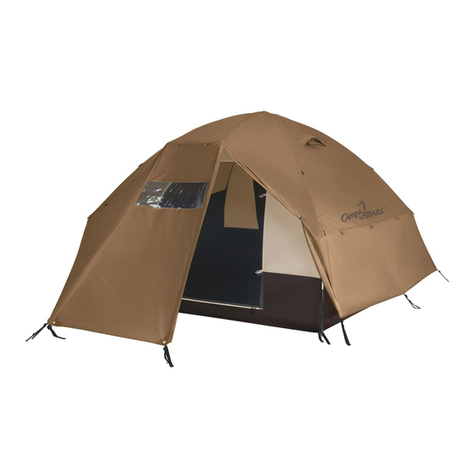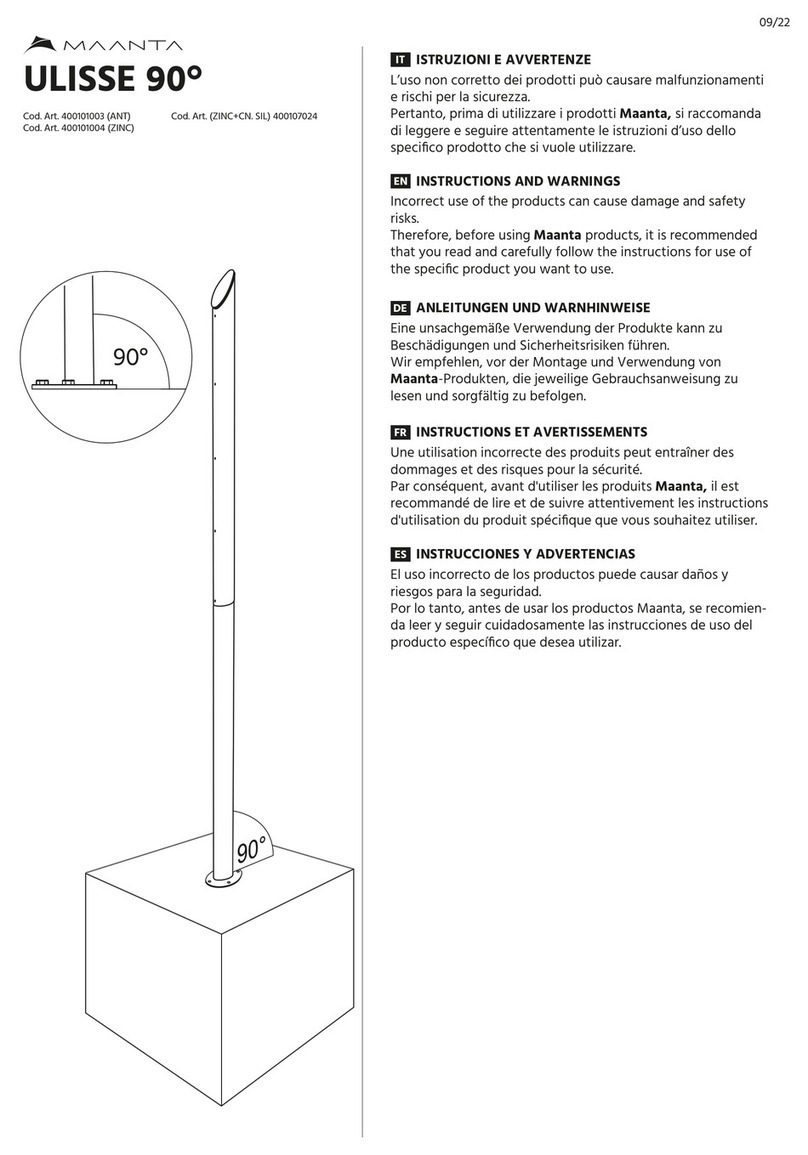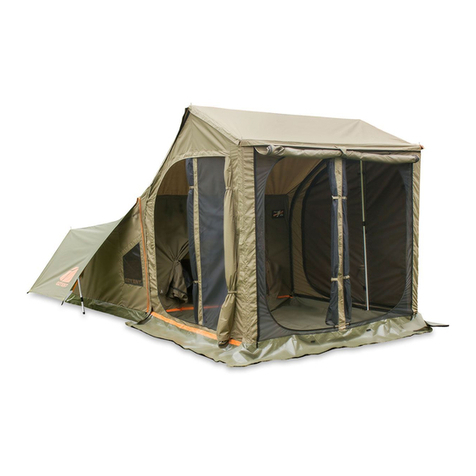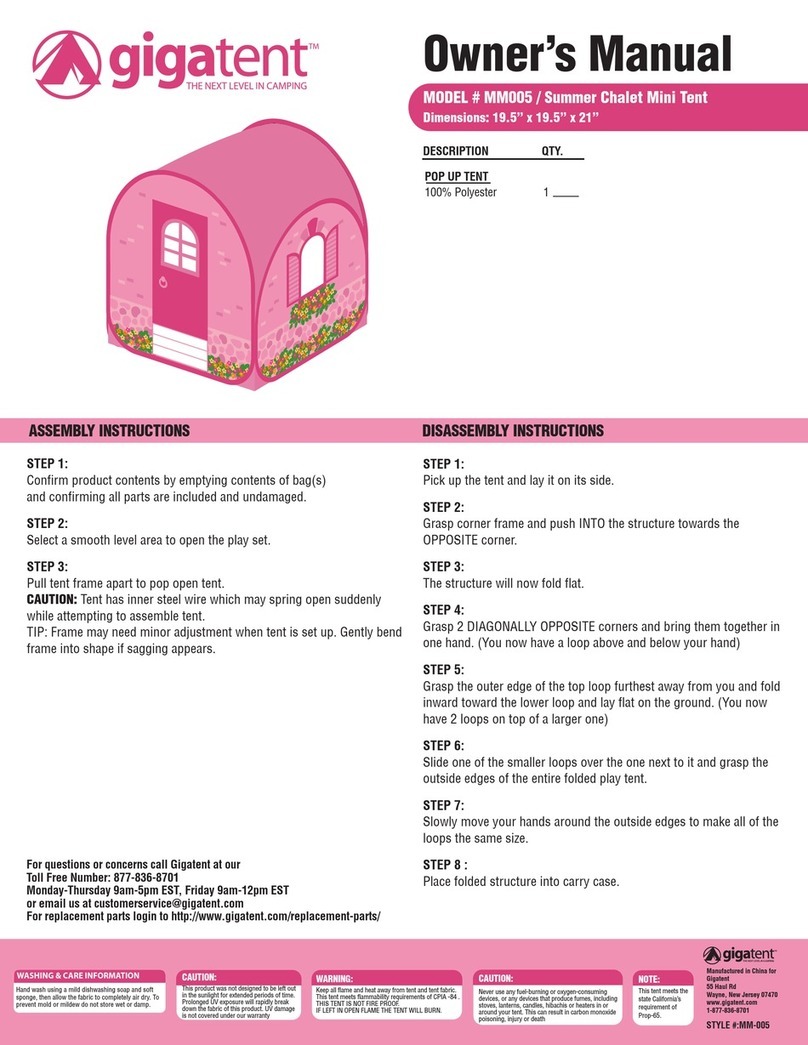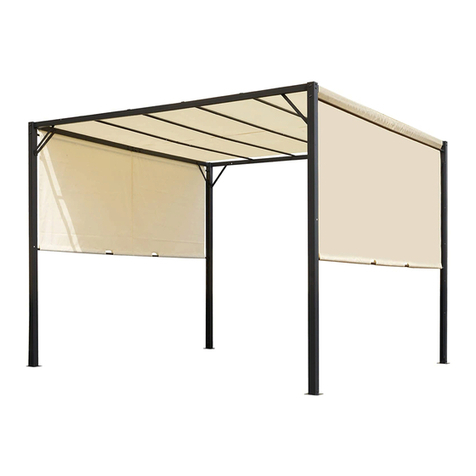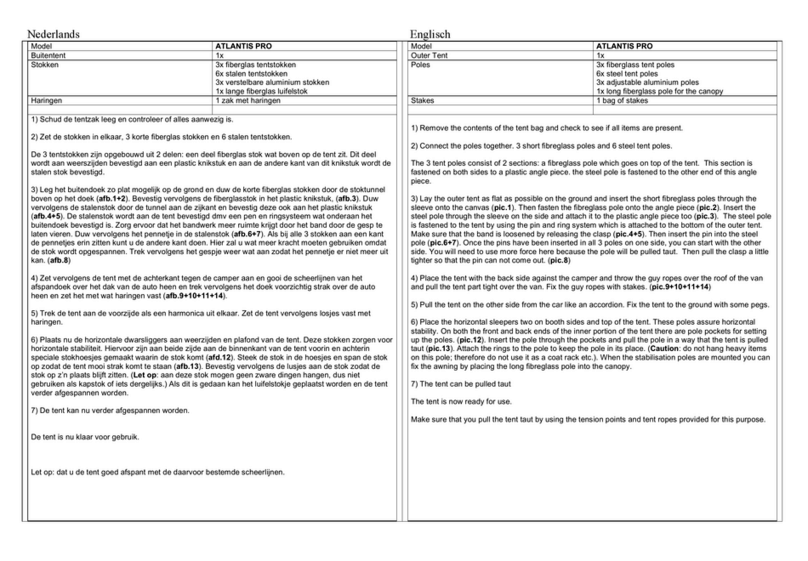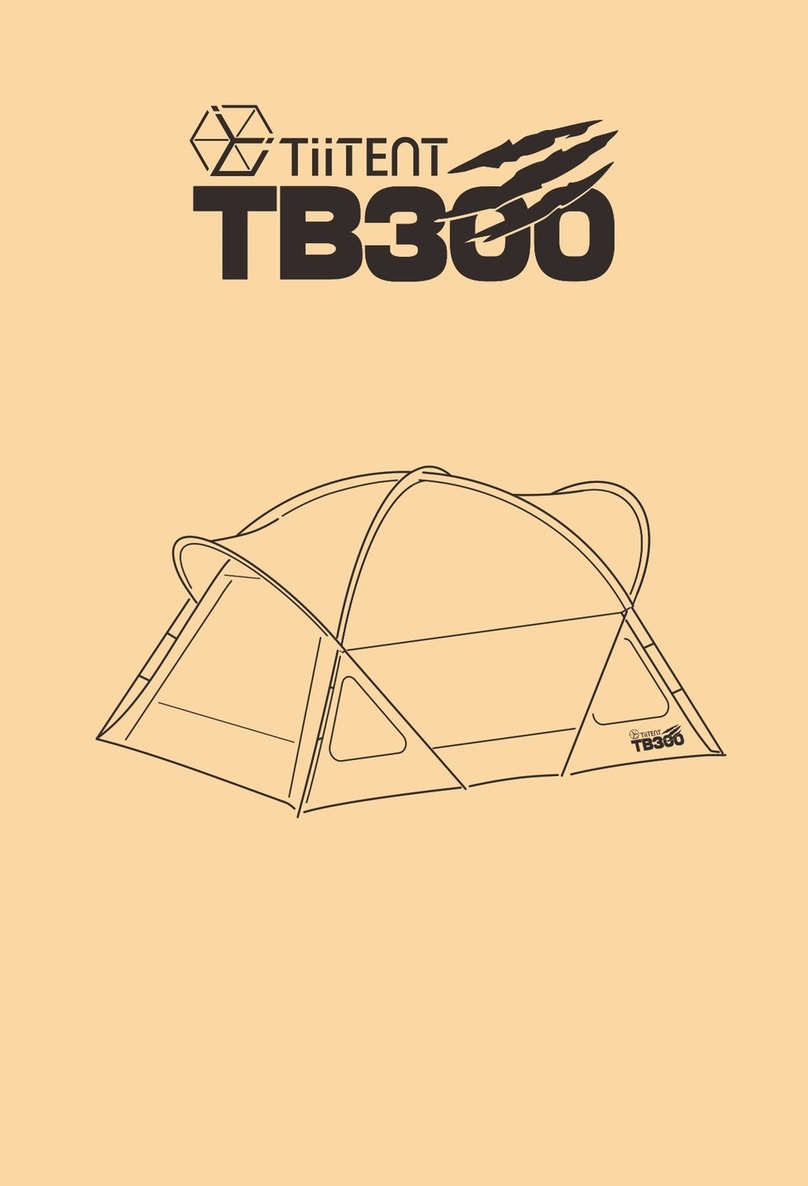
IMPORTANT
Read the following safety warnings and all instructions in their entirety prior to installation. If you have questions or are missing any parts, contact Ver-
saTube Building Systems Customer Service at 1-800-900-7222 before proceeding.
WARNING:
This structure and its manufactured components are engineered per the instructions and engineering plans provided by VersaTube Building Systems. The
use of any framing components or materials in the erection of this structure that are not produced or provided by VersaTube could negatively affect the
structural integrity and will negate any warranty provisions. VersaTube Building Systems and its authorized dealers are not responsible for any structural
collapse or failure to perform resulting from additions, add-ons, or manipulation of non-VersaTube components and/or failure to follow approved instruc-
tions.
WARNING:
Metal parts may get hot when exposed to high heat or direct sunlight. Avoid contact with skin and wear protective gloves and clothing to prevent the possi-
bility of burns.
WARNING:
Avoid installation on windy days as wind may create hazards during the installation process. Wind may blow material or cause partially installed compo-
nents to collapse prior to being secured or fully installed. The weight of the components or structure may cause serious injury if it should collapse.
WARNING:
Metal conducts electricity and electrical shock hazards exist since the structure is made of metal. During installation or storage, keep the structure and all
components away from electrical sources. Make sure that your selected location is away from power lines, underground cables, and any other source of
electrical power. Serious injury or even death may occur if contact is made with electrical current.
WARNING:
If the structure is moved once it has been installed, be certain to inspect all components and conditions and follow each and every step of these instructions
to make certain that the structure is securely anchored, properly installed, and aligned. Failure to follow these steps could lead to collapse of the structure
and may result in serious risk of injury.
WARNING:
In the event that your structure is enclosed, be sure to provide proper and adequate ventilation and egress and ingress. Hazardous, poisonous or noxious
substances should not be stored in the structure absent proper ventilation and all warnings and instructions of the manufacturer of the substance. Also,
proper ingress and egress should be provided to prevent adults or children from becoming trapped inside the structure.
WARNING:
If metal panels are selected to cover all or a portion of your structure, be careful of the sharp edges which may cause cuts or lacerations. Wear protective
work gloves and suitable clothing for protection and always take care when handling metal parts. Always wear safety goggles or glasses when cutting
metal or driving/drilling screws.
NOTE:
The VersaTube Building System is an all domestically produced galvanized tubular steel framing system. Maintenance is required twice annually on par-
ticular areas of the framing system i.e. ‘’weld seams” and “cut or raw ends”. This maintenance is performed by applying any “Zinc coated” silver spray paint
found at local mass merchant or paint store to these areas twice annually or every six (6) months.
NOTE:
All sheet metal cladding applied to the VersaTube frame are attached with self drilling screws with a rubber washer. These screws produce small shavings
when drilling through the cladding. If the shavings are allowed to sit on the sheet metal for an extended period, rust spots will form and promote deteriora-
tion. Metal shavings must be brushed after installation of the sheet metal. Claims reported against rust spots will not be honored by VersaTube Building
Systems.
© MSMP INC. 12/12 PAGE 2
SAFETY, HAZARD, AND MAINTENANCE INSTRUCTIONS
ABOUT OUR BUILDINGS
Buildings come in four widths: 12’, 20’, 24’, and 30’.
Buildings come in three side or eave heights: 8’, 10’, or 12’. Height extensions are required to create 10’ and 12’ side height buildings.
2’ height extensions for 10’ and 4’ height extensions for 12’.
Buildings are supplied with 4’,5’ or 6’ on center post spacing depending on the requirements for wind and snow load in your area of
the country. It is the customer’s sole responsibility to determine the specific code requirements applicable in city and state in which the
product will be erected.
The building length will be determined by the number of extension base rails you use. All buildings have starter base rails which are
ether 6’, 8’ or 10’ with 2 or 3 vertical pins. These are installed first on ether side at the front of the building. After the starter base rails
are in place extension base rails are inserted down the length of the building. These extension base rails will be 8’ and 4’ for 4’ O/C
buildings and 10’ and 5’ for 5’ O/C buildings, 6’ for 6’ on center buildings. NOTE: The length of the frame is 2” longer than the
advertised length. (example: a 20’ long building is actually 20’-2” long). See the last page for a concrete slab drawing.
All buildings will have purlins and girts for application of vertical sheet metal.
The frame layout for the back and front of the building will be different for each building width and height.
The standard VersaTube® buildings have the following garage door openings: 12’ wide (1) 9’x7’ door, 20’ wide (1) 16’x 7’ door, 24’
wide (1) 16’ x 7’ door or (2) 9’ x 7’ doors (optional), and 30’ wide (1) 16’ x 7’ door or (2) 9’ x 7’ doors (optional). The frame can be ad-
justed to accommodate taller doors in the same widths. (Doors not included)
A side access or walk door frame is provided with each building. (Door not included)
Window frame kits and windows are optional.
We recommend that your building be anchored to a concrete slab with built-in footings and a sheeting ledge. A foundation drawing is
provided for the proper slab construction. The building can also be anchored to a larger, pre-existing slab.

